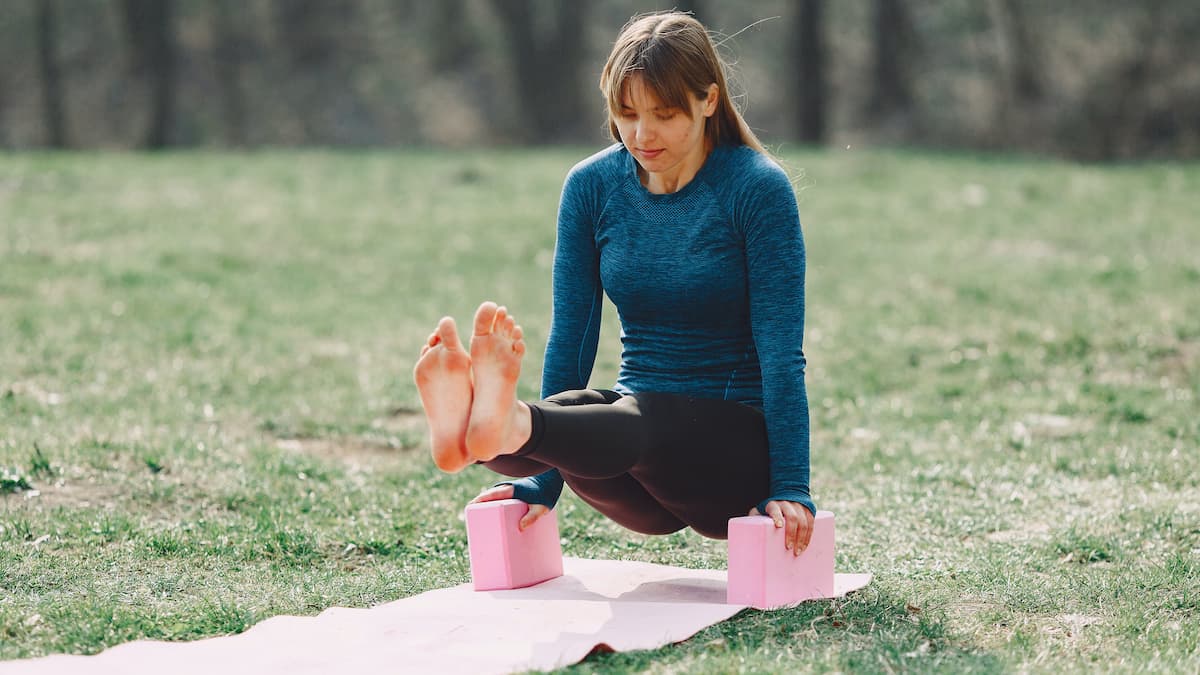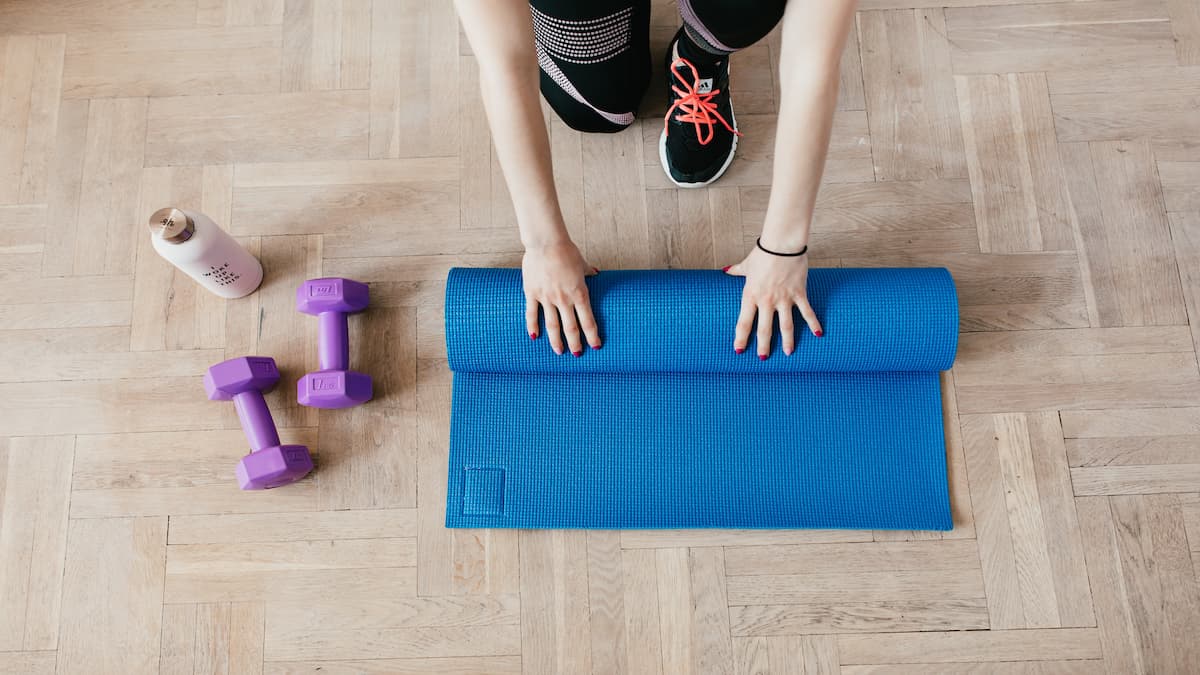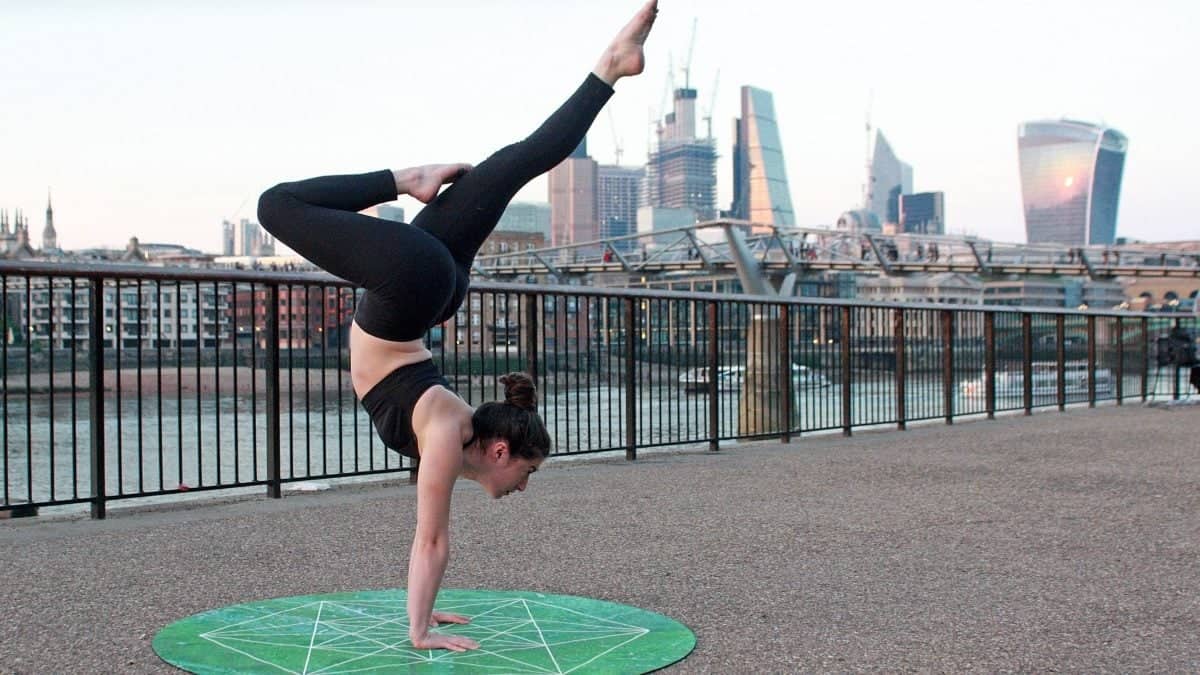Introduction
Arm balance yoga poses are a sub-group of yoga asanas (poses) that primarily involve balancing on the hands or arms while the feet are lifted off the ground. These poses require strength, stability, and focus. Also, these poses are both physically and mentally challenging. Arm balances not only build upper body strength but also help improve core strength, balance, and concentration.
Arm balance poses demand mindfulness and practice, making them unsuitable for beginners. Achieving mastery over these poses necessitates dedicated effort and patience. Beginners should approach them cautiously and seek guidance from experienced instructors to prevent injury and ensure proper alignment. With consistent practice and focus, practitioners can gradually develop the strength and technique required for arm balances.
In this article, we explore the safety measures for mastery along with a list of some arm-balancing poses.
Safety Measures for Arm Balance Mastery
Mastering arm balances in yoga requires dedication and patience. Here are some precautions to keep in mind during your practice:
- Warm-Up Thoroughly: Always warm up your body before attempting arm balances. Engage in dynamic stretches and movements to prepare your muscles and joints for the demands of the poses.
- Build Strength Gradually: Arm balances require significant upper body and core strength. Start with foundational poses that strengthen these areas before progressing to more advanced arm balances.
- Focus on Alignment: Proper alignment is crucial for safety and effectiveness in arm balances. Pay attention to cues from instructors and use mirrors to check your alignment. Avoid collapsing into the shoulders or overarching the lower back.
- Use Props for Support: Props such as blocks or straps can provide support and assistance as you work on mastering arm balances. Use them to modify poses and gradually build strength and stability.
- Listen to Your Body: Honor your body’s limits and avoid pushing yourself too hard. If you feel pain or discomfort beyond the normal sensations of stretching and effort, ease out of the pose and consult with a yoga instructor or healthcare professional.
- Practice Mindfully: Approach arm balances with a calm and focused mindset. Concentrate on your breath and maintain a steady gaze to help center your attention and balance.
- Be Patient and Persistent: Mastery of arm balances takes time and consistent practice. Celebrate progress along the way and be patient with yourself as you work towards achieving your goals.
By following these precautions and approaching your practice with mindfulness and care, you can safely and effectively work towards mastering arm balances in yoga.
Important Arm Balance Yoga Poses
Peacock Pose (Mayurasana)
Peacock Pose is an advanced-level arm balance yoga pose. In this pose, the practitioner balances the entire body on the hands while the legs are lifted off the ground and extended backward. The elbows are typically tucked into the abdomen, and the body is supported by the strength of the arms and core muscles. This pose requires significant upper body strength, wrist flexibility, and core stability to hold the posture effectively. It’s an advanced pose that offers benefits for both physical and mental strength.
Crow Pose (Kakasana)
Crow Pose is a foundational arm balance yoga pose that builds strength and balance. In this pose, practitioners squat down, placing their hands shoulder-width apart on the ground. They then lean forward, bending their elbows and bringing their knees to rest on the backs of their upper arms. With the gaze forward and the core engaged, they lift their feet off the ground, balancing the entire body on the hands. Crow Pose strengthens the arms, wrists, and core muscles while improving focus and concentration.
Crane Pose (Bakasana)
There’s often confusion between Kakasana (Crow Pose) and Bakasana (Crane Pose) due to their similar appearances and names. Here’s the distinction:
- Bakasana (Crane Pose): This pose is also known as “Crane Pose” because it resembles a crane bird. In Bakasana, the arms are straight, and the legs are positioned higher up on the arms, closer to the armpits. The gaze is typically forward or slightly upward.
- Kakasana (Crow Pose): This is sometimes referred to as “Crow Pose.” In this pose, the arms are bent, and the knees rest on the backs of the upper arms. The gaze is usually directed slightly forward or down towards the mat.
While they are similar arm-balance poses, the positioning of the arms and legs varies slightly between the Crane Pose and the Crow Pose, giving them their distinct characteristics.
Flying Crow Yoga Arm Balance
Flying Crow is a variation of Crow Pose. Moreover, it is one of the advanced yoga arm balances. In this variation, the practitioner extends one leg back while keeping the other knee bent on the upper arm. The extended leg gives the appearance of “flying,” hence the name. Flying Crow requires greater strength, flexibility, and balance compared to the basic Crow Pose.
Side Crow Pose (Parsva Bakasana)
Side Crow Pose is an intermediate arm balance yoga pose that offers a challenging twist variation. In this pose, practitioners balance on their hands while twisting their torso to one side, with one arm bearing most of the weight and the other extending towards the ceiling. Side Crow strengthens the arms, wrists, and core muscles while improving balance, concentration, and spinal flexibility. It requires focus, stability, and proper alignment for execution
Firefly Pose (Tittibhasana)
Firefly Pose is an advanced arm balance yoga pose that demands strength, flexibility, and focus. In Firefly Pose, practitioners extend their arms straight out to the sides while lifting their legs and balancing on their hands. The legs are typically spread wide, resembling the wings of a firefly. This pose engages the core, arms, and inner thighs. Moreover, it improves balance, concentration, and hip flexibility. It requires patience, practice, and mindful breath control for mastery.
Eight-Angle Pose (Astavakrasana)
The Eight-Angle Pose is an advanced arm balance yoga pose requiring strength, flexibility and focus. In this pose, practitioners twist their body into a complex shape, with one arm and leg supporting most of the weight while the other limbs extend in various directions. This pose strengthens the arms, wrists, core, and legs. Also, it improves balance, coordination, and spinal flexibility.
Flying Pigeon Pose (Eka Pada Galavasana)
Flying Pigeon Pose is an advanced arm balance yoga pose that blends hip opening with arm balancing. In Flying Pigeon Pose, practitioners start in a low lunge position and then hook one leg over the upper arm while extending the other leg straight back. This pose demands strength, flexibility, and focus, engaging the arms, core, and hip flexors. Flying Pigeon Pose cultivates balance, stability, and mental resilience, challenging practitioners to find harmony between strength and grace.
Scale Pose (Tolasana)
The Scale Pose is an arm balance yoga asana that cultivates upper body strength and core stability. In Tolasana, practitioners sit on the ground with their legs extended and lift the entire body off the ground using arm strength. The hands are placed on the ground beside the hips, supporting the body in a lifted position. This pose engages the arms, shoulders, and core muscles while promoting balance and concentration. Tolasana also stretches the hamstrings and improves overall body awareness.
Handstand (Adho Mukha Vrksasana)
Handstand is a powerful inversion that challenges strength, balance, and focus. In the Handstand, practitioners balance upside down on their hands with legs extended towards the sky. This pose strengthens the arms, shoulders, and core muscles. It improves proprioception and mental clarity. The handstand requires proper alignment, engagement of the core, and controlled breath to maintain stability. It promotes courage, confidence, and a sense of lightness, making it a cornerstone pose in yoga practice.
Conclusion
When practicing arm balances, it’s important to warm up properly, engage the core muscles for stability, and focus on the breath to stay centered and balanced. It’s also crucial to listen to your body and not force any poses beyond your current level of ability to avoid injury. Beginners may benefit from practicing arm balance poses with the guidance of an experienced yoga instructor.


